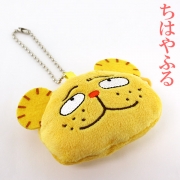カテゴリ: うたのおけいこ
Blief explanation on Tanka poetry for foreign visitors.
Thank you for your visit and welcome to Daddy Bear's "Tanka 短歌 poem" weblog site "Uta No Okeiko (The Study of Tanka)".
Tanka is modern, contemporary and ethnic poetry of Japan.
It is generally composed of 31(5,7,5,7,7) syllables (みそひともじ misohitomoji) in Japanese languege.
This poetical form is based on "Waka 和歌 (or Uta 歌, Yamato-uta 大和歌)" traditional poetry of Japan that really goes back more than 1300 years at least.
This traditional literature always grew under the aegis of Emperor of Japan Court (or "Emperor System").
We Japanese feel beauty, elegance and a kind of (supreme) spirituality of it.
I think Waka tradition and Tanka modernity originated by great Tanka and Haiku poet Masaoka Shiki 正岡子規 (1867-1902) is continuous, but some poets don't think so.
It is probably a matter of view and subtle difference, well,well.
Then, enjoy it.
田児の浦ゆうち出でてみれば真白にぞ不尽(ふじ)の高嶺に雪は降りける
山部赤人 (万葉集318、西暦700年頃)
Tago no ura yu uchiidetemireba masiro nizo Fuji no takane ni yuki wa furikeru
Yamabe no Akahito (Akahito of Yamabe, Manyosyu No.318, about AD700)
Coming out from Tago's nestle cobe,
I gaze :
white, pure white
the snow has fallen
on Fuji's lofty peak
リービ英雄訳
Translated by Hideo Levy 2004
Thank you for your visit and welcome to Daddy Bear's "Tanka 短歌 poem" weblog site "Uta No Okeiko (The Study of Tanka)".
Tanka is modern, contemporary and ethnic poetry of Japan.
It is generally composed of 31(5,7,5,7,7) syllables (みそひともじ misohitomoji) in Japanese languege.
This poetical form is based on "Waka 和歌 (or Uta 歌, Yamato-uta 大和歌)" traditional poetry of Japan that really goes back more than 1300 years at least.
This traditional literature always grew under the aegis of Emperor of Japan Court (or "Emperor System").
We Japanese feel beauty, elegance and a kind of (supreme) spirituality of it.
I think Waka tradition and Tanka modernity originated by great Tanka and Haiku poet Masaoka Shiki 正岡子規 (1867-1902) is continuous, but some poets don't think so.
It is probably a matter of view and subtle difference, well,well.
Then, enjoy it.
田児の浦ゆうち出でてみれば真白にぞ不尽(ふじ)の高嶺に雪は降りける
山部赤人 (万葉集318、西暦700年頃)
Tago no ura yu uchiidetemireba masiro nizo Fuji no takane ni yuki wa furikeru
Yamabe no Akahito (Akahito of Yamabe, Manyosyu No.318, about AD700)
Coming out from Tago's nestle cobe,
I gaze :
white, pure white
the snow has fallen
on Fuji's lofty peak
リービ英雄訳
Translated by Hideo Levy 2004
お気に入りの記事を「いいね!」で応援しよう
[うたのおけいこ] カテゴリの最新記事
-
坂本野原 あじさいの枯れ枝を刈るめんど… 2024年11月16日
-
坂本野原 サラスパでアラビアータをこし… 2024年10月16日 コメント(2)
-
坂本野原 長袖に衣替えしてしばらくは肘… 2024年09月25日
【毎日開催】
15記事にいいね!で1ポイント
10秒滞在
いいね!
--
/
--
PR
X
安立スハル 見たかりし山葵の花に見入りけりわが波羅葦僧もここらあたりか
伝・藤原義孝/賀縁 時雨とは千種の花ぞ散りまがふなにふるさとの袖濡らすらむ
西行 をぐら山ふもとの里に木の葉散ればこずゑに晴るる月を見るかな
北原白秋 もみじ葉を月の光にながめゐてはららきしからに我はおどろく
ジョージ・ハリスン マイ・スウィート・ロード
斎藤元彦知事再選、「広報戦略」PR会社女性社長の自爆大炎上に苦笑
けさの『NHK短歌』より 掲題「ごめん」 レベル高くてちょっと驚く
ジョージ・ハリスン / オリヴィア・ニュートン・ジョン 美しき人生
ジョージ・ハリスン オール・シングス・マスト・パス
ジョージ・ハリスン ユー(二人はアイ・ラヴ・ユー)
伝・藤原義孝/賀縁 時雨とは千種の花ぞ散りまがふなにふるさとの袖濡らすらむ
西行 をぐら山ふもとの里に木の葉散ればこずゑに晴るる月を見るかな
北原白秋 もみじ葉を月の光にながめゐてはららきしからに我はおどろく
ジョージ・ハリスン マイ・スウィート・ロード
斎藤元彦知事再選、「広報戦略」PR会社女性社長の自爆大炎上に苦笑
けさの『NHK短歌』より 掲題「ごめん」 レベル高くてちょっと驚く
ジョージ・ハリスン / オリヴィア・ニュートン・ジョン 美しき人生
ジョージ・ハリスン オール・シングス・マスト・パス
ジョージ・ハリスン ユー(二人はアイ・ラヴ・ユー)
コメント新着
カテゴリ
Ωριων/Orion
(7)日々折々
(148)フォト折々
(240)今日のつぶやき
(260)古事記歌垣
(1)万葉恋々
(303)古今憧憬
(242)新古今夢幻
(179)その他の和歌
(236)百人一首
(164)独楽吟 ――橘曙覧のリアル
(59)子規玩味
(118)近代短歌の沃野
(316)現代短歌の曠野
(695)「短歌人」から
(15)うたのおけいこ
(670)俳句ちら読み 逍遥遊
(131)芭蕉俳諧
(59)詩
(42)詩歌つれづれ
(39)童謡・民謡 桃源郷
(101)漢詩縹渺
(20)坂本龍馬
(17)ものぐさ枕草子庵
(14)作歌ジャンク
(15)J-POPパラディーゾ
(1008)マイ・フェイバリット・ソングス
(554)MUSICA CLASSICA
(155)ハート・オブ・アート
(36)アフィリエイト
(348)社会現象 フェノメナ
(253)シチュエーション・アナリシス
(313)面白すぎるネットサーフィン
(131)シネマ/ドラマ
(94)お店ウォッチング
(13)ダイエット&エクササイズ
(161)新聞歌壇
(20)山ぶどう 手芸作品
(8)三人娘子育て三昧
(21)女に酔わず酒に酔え
(4)あるビルの潰え
(20)けさのラディッシュ
(7)キーワードサーチ
▼キーワード検索
裁判に使われる浄玻…
New!
しぐれ茶屋おりくさん
2024秋旅 こまめに… New!
ナイト1960さん
New!
ナイト1960さん
家の中で New!
masatosdjさん
New!
masatosdjさん
散歩の途中で出会っ… 蘭ちゃん1026さん
蘭ちゃん1026さん
家族 ミセスkarimeroさん
ミセスkarimeroさん
岬麻呂旅便り334・南… けん家持さん
「恋心」「人魚姫」… 47弦の詩人さん
システムエンジニア… モモンガ2006さん
こだわる男の「モノ… こだわる男の「モノ&ファッション」さん
マリリンワールド まりりん824さん
2024秋旅 こまめに…
 New!
ナイト1960さん
New!
ナイト1960さん家の中で
 New!
masatosdjさん
New!
masatosdjさん散歩の途中で出会っ…
 蘭ちゃん1026さん
蘭ちゃん1026さん家族
 ミセスkarimeroさん
ミセスkarimeroさん岬麻呂旅便り334・南… けん家持さん
「恋心」「人魚姫」… 47弦の詩人さん
システムエンジニア… モモンガ2006さん
こだわる男の「モノ… こだわる男の「モノ&ファッション」さん
マリリンワールド まりりん824さん
サイド自由欄
*このブログサイトは、ご覧の端末によっては管理者の意図するフォント(書体)やレイアウトが正確に表示されない場合があります。ご了承下さい。
なお、フォント表示の設定は、(ウィンドウズの場合)左下のスタート・アイコンから入って、設定(歯車)→個人用設定→フォント入力の画面で出来ます。
新宿会計士の政治経済評論
アトリエぺんちゃん
山下達郎 サンデー・ソングブック
松村邦洋 DJ日本史
東洋経済オンライン
世界は数字で出来ている
お料理速報
パンドラの憂鬱
Forbes スピリチュアルババア
goo 教えて!goo
なお、フォント表示の設定は、(ウィンドウズの場合)左下のスタート・アイコンから入って、設定(歯車)→個人用設定→フォント入力の画面で出来ます。
アトリエぺんちゃん
山下達郎 サンデー・ソングブック
松村邦洋 DJ日本史
東洋経済オンライン
世界は数字で出来ている
お料理速報
パンドラの憂鬱
Forbes スピリチュアルババア
goo 教えて!goo
© Rakuten Group, Inc.










